Description
Heavyweight construction of peascod form with medial ridge and thick rolled gussets at arms and neck. Thick integral apron, pierced with pairs of holes for attachment of padded lining (absent). Etched with two medallions featuring male and female busts facing each other and radiating vertical bands depicting armor elements, sun and moon faces, stands of arms, etc., on gilt stippled background with simulated roped border on both sides. Inside of breastplate with dark brown patina and hammer marks. Showing lamination and pitting overall, the gilding refreshed. Such armors were popular in Pisa and Milan in the last quarter of the 16th C. Armor was considered an important part of a gentleman’s attire in the 16th C. When armor styles changed in the 17th C, a number of these no longer fashionable etched suits were purchased for use by the Amsterdam Town Guard. Possibly from the workshop of Pompeo della Cesa of Milan (active 1572-1593). Weight 10 pounds, 6 ounces (4.70 kg).

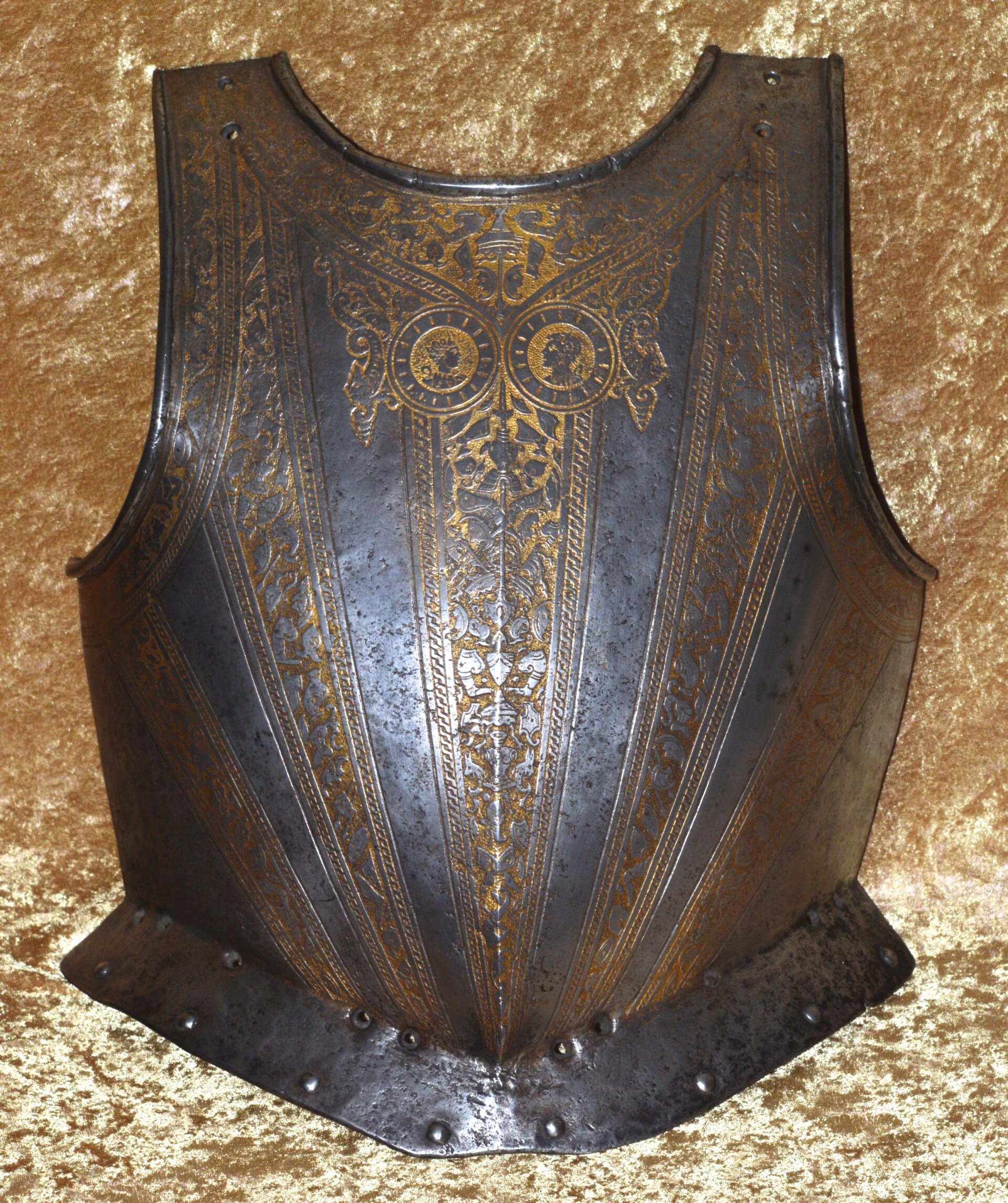
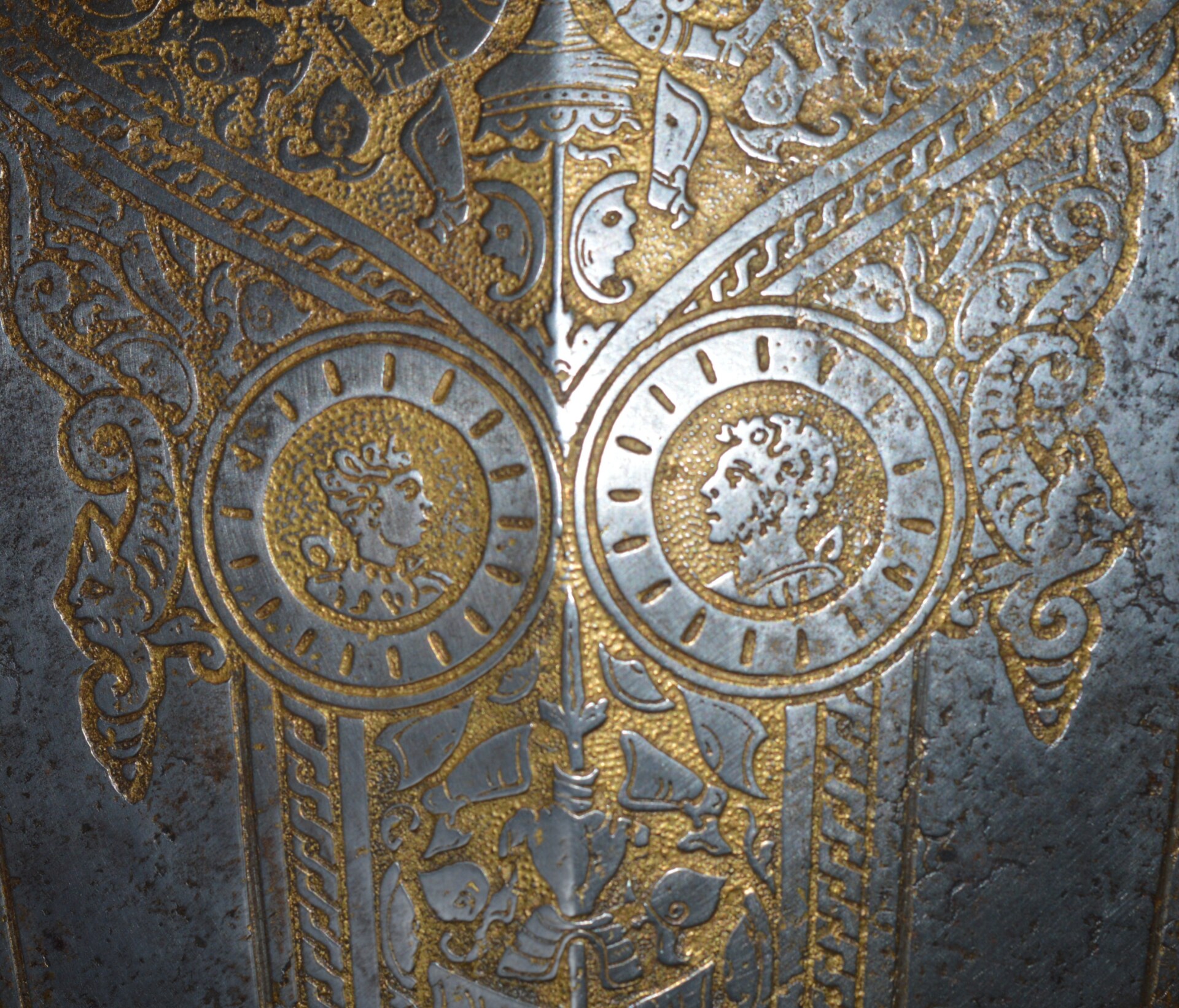

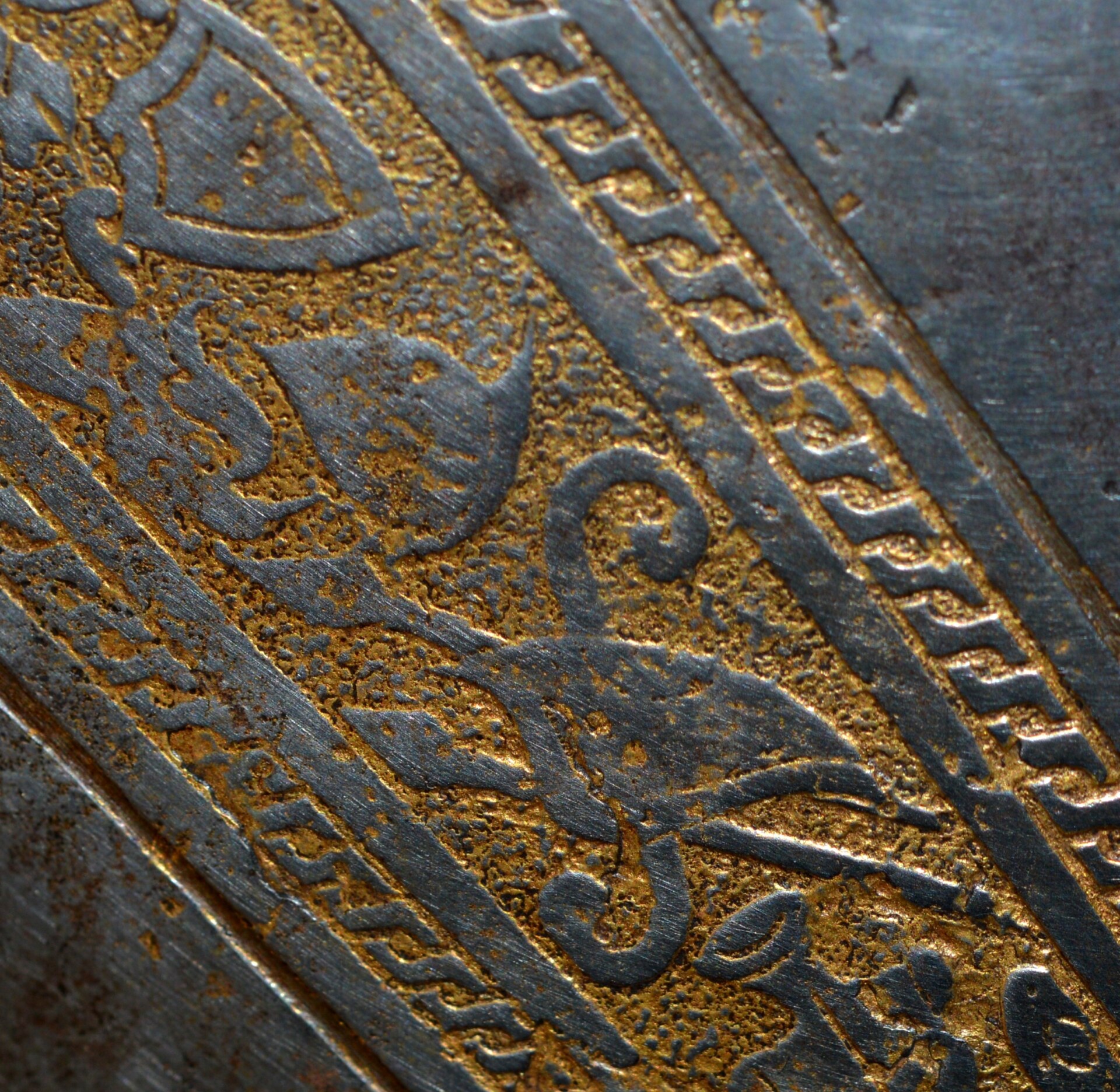
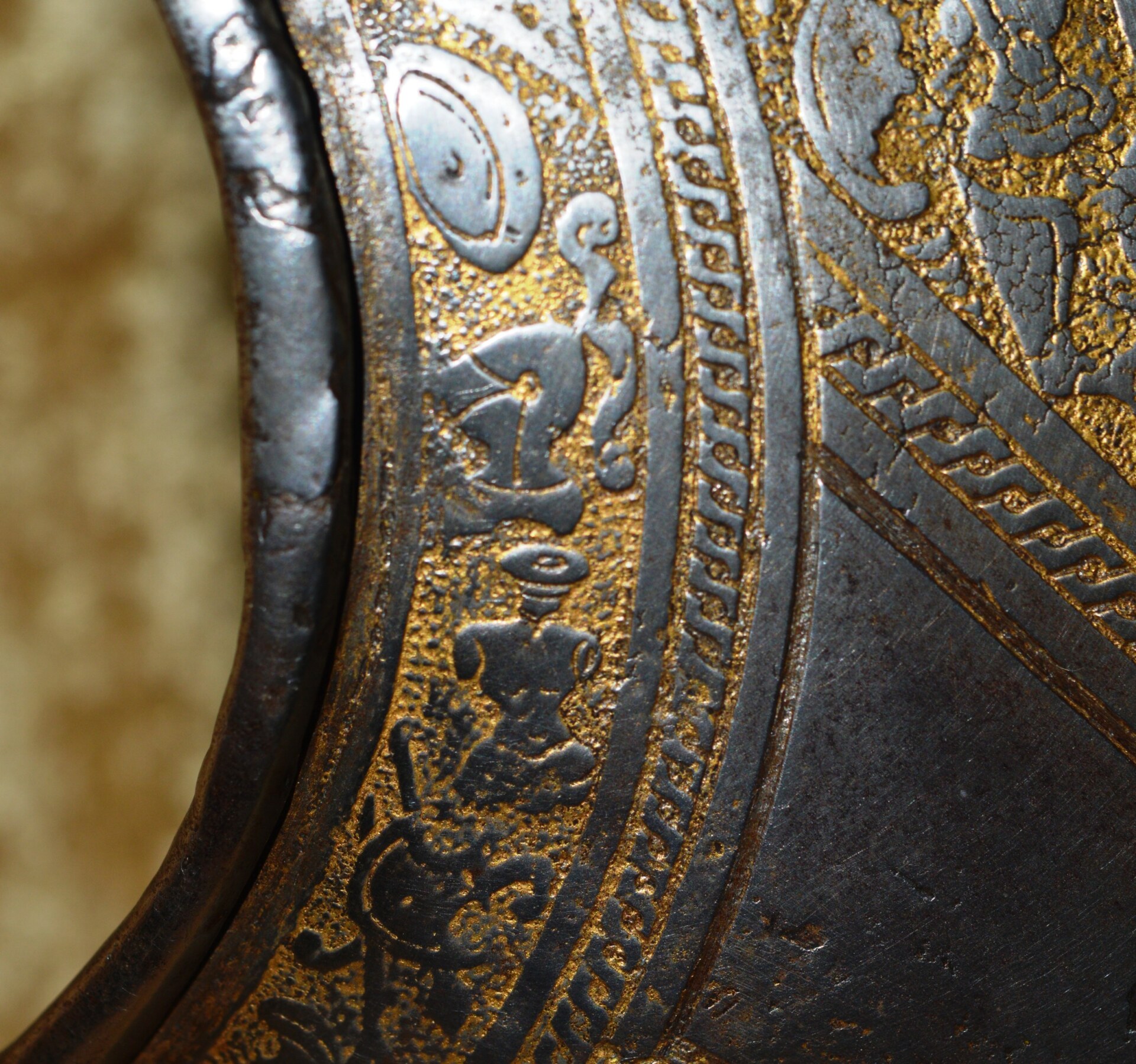

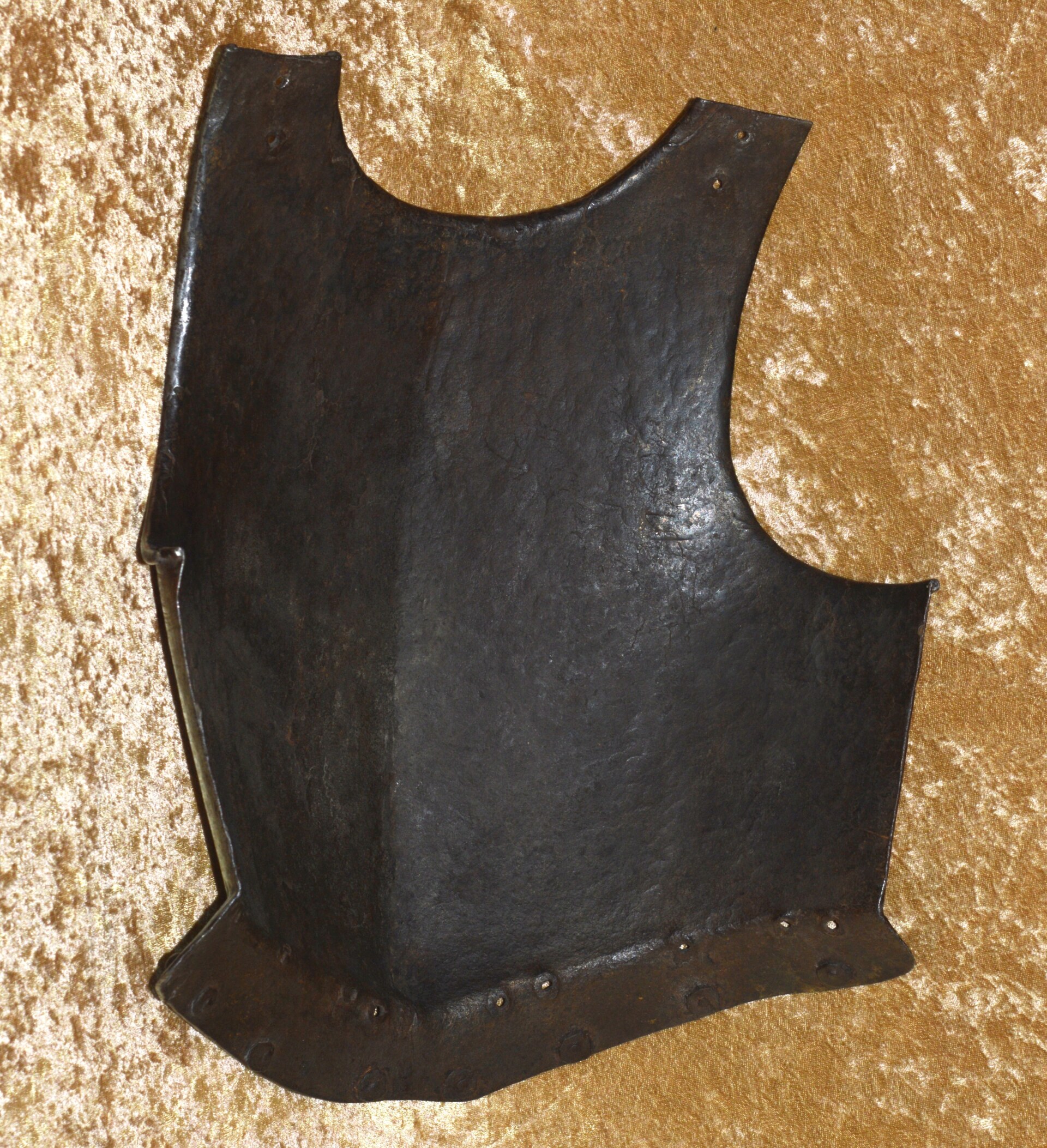
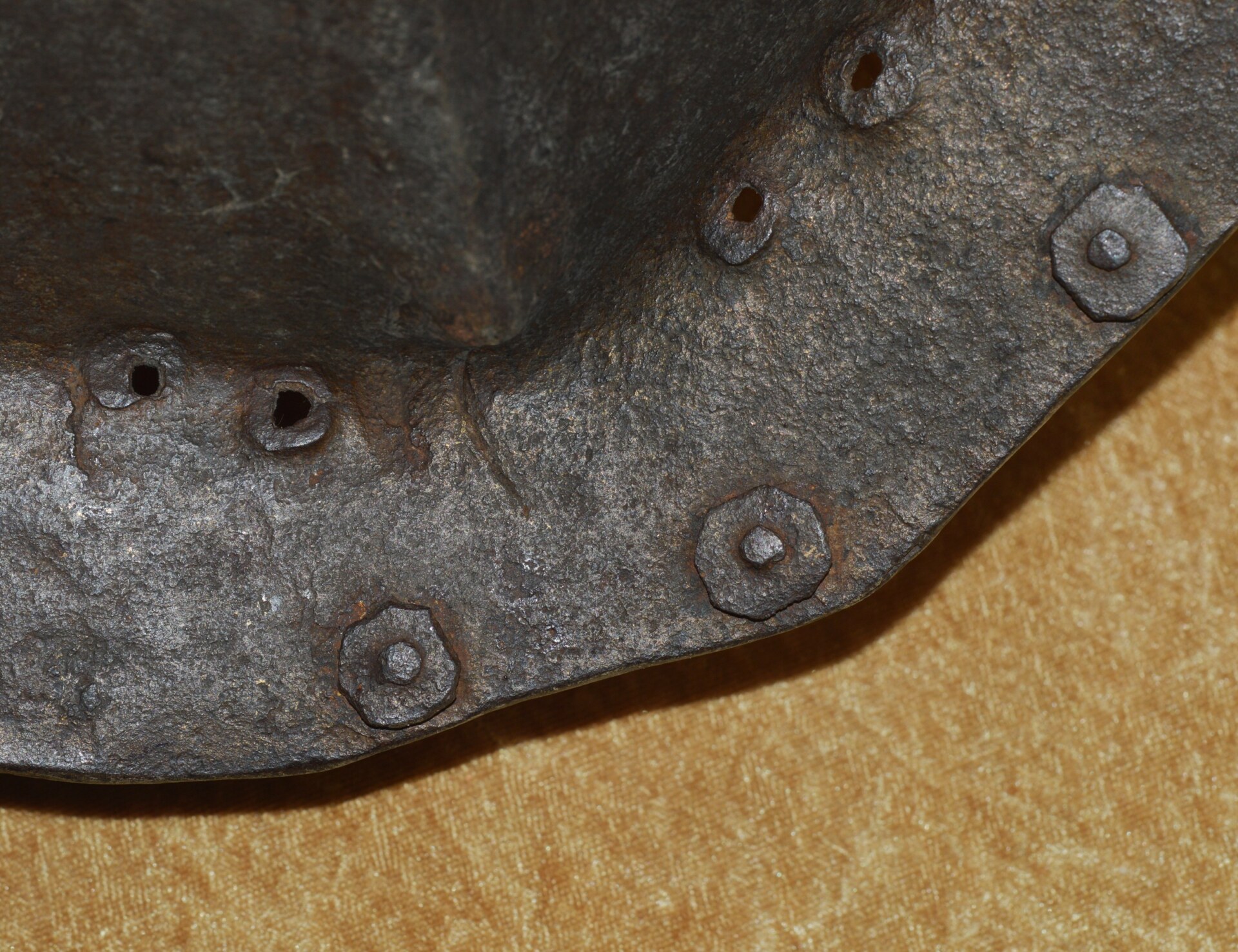
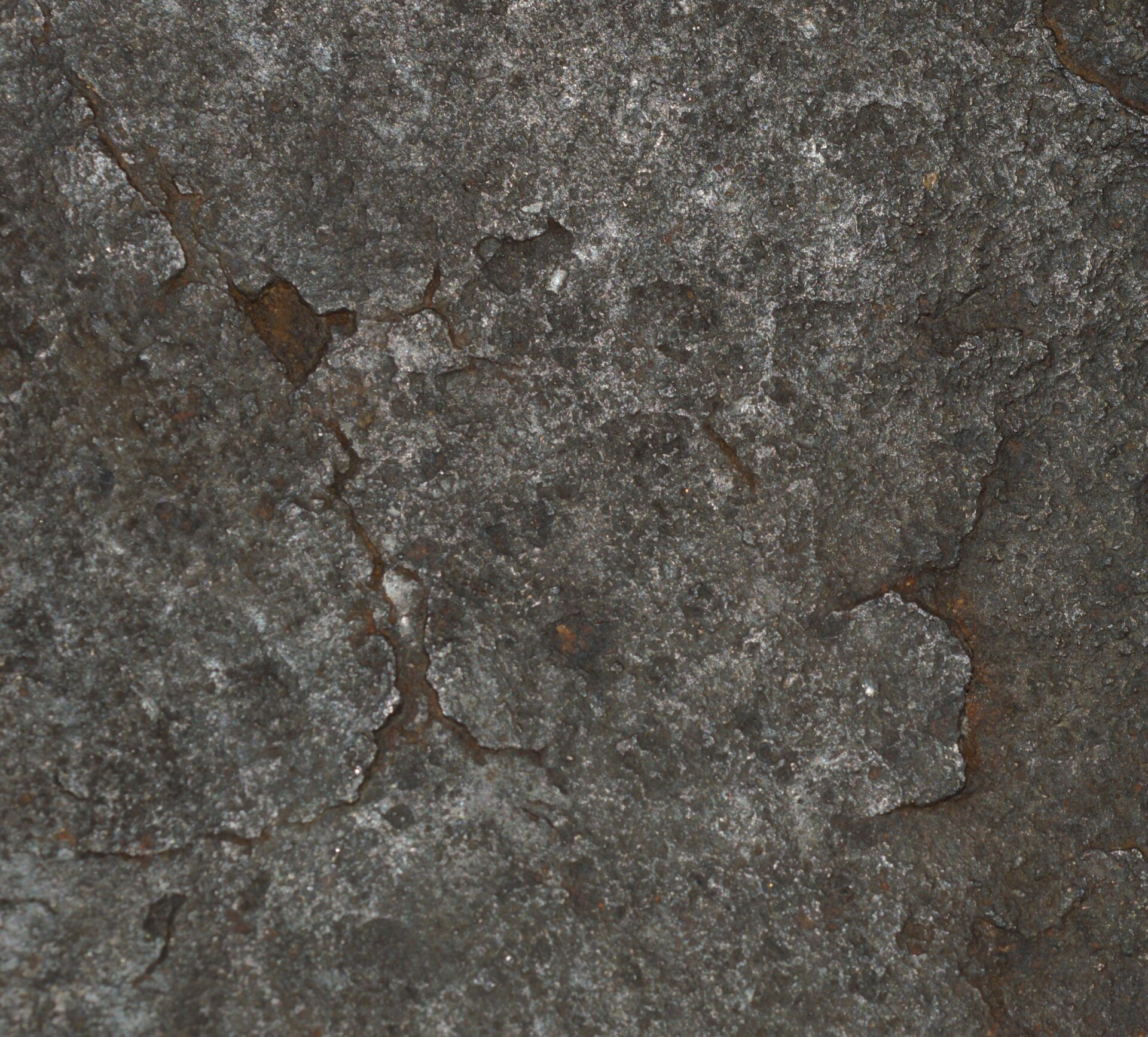

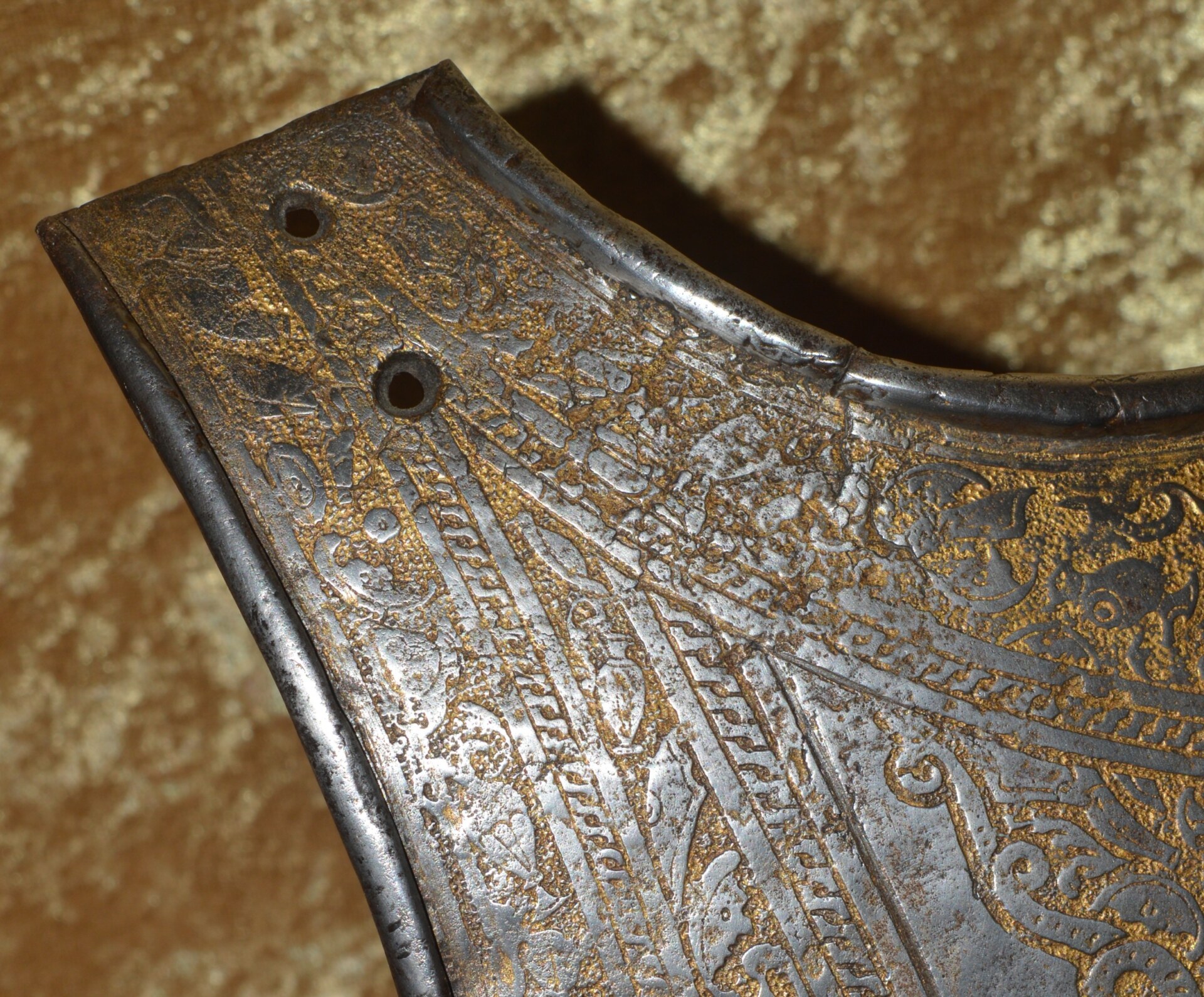
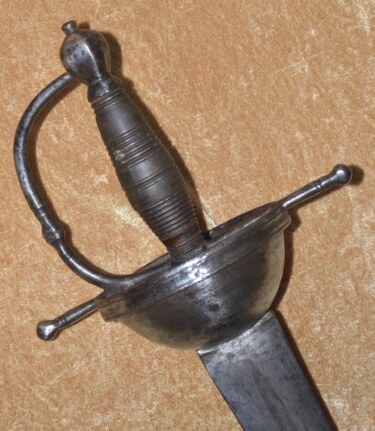 Spanish or Portuguese Cuphilt Bilbo Broadsword, Early 18th C
Spanish or Portuguese Cuphilt Bilbo Broadsword, Early 18th C 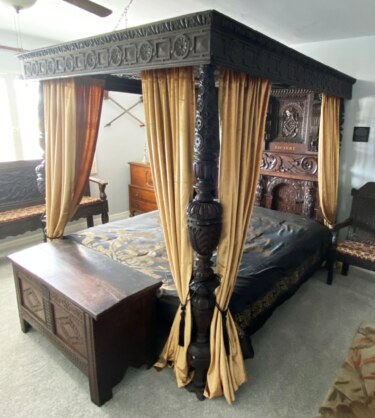 Historic English Oak Tester Bed from Podenhale Manor, 17th C and Later
Historic English Oak Tester Bed from Podenhale Manor, 17th C and Later
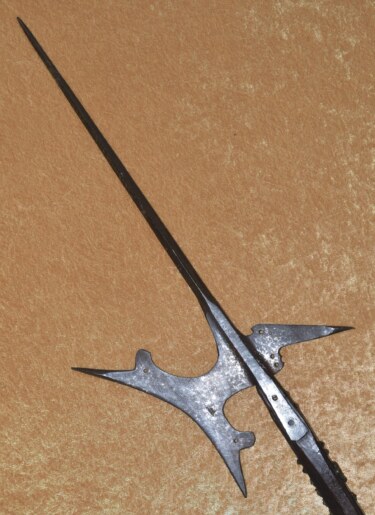 European Halberd, Late 16th C, Probably Italian
European Halberd, Late 16th C, Probably Italian  Early Nazi Model 1933 SA Dagger by Puma
Early Nazi Model 1933 SA Dagger by Puma